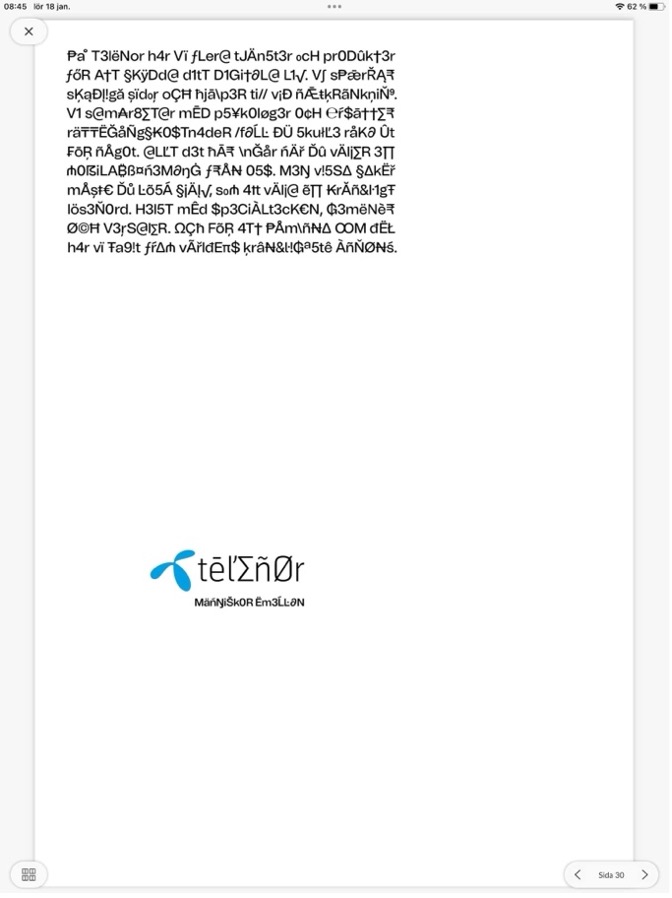Is AI an incentive for creators or a hindrance?
 Av Ola Larsén
on 11 March, 2025
Av Ola Larsén
on 11 March, 2025
As AI breaks into more and more areas, the advertising and marketing that reaches customers and consumers is also affected. Coca-Cola received both praise and criticism for its AI-generated campaigns for Christmas 2024. Backlashes against the artificial, the non-human, are increasingly visible in the debate.
Not for nothing did L'Oréal recently go out in the media and proudly "claim" that going forward, none of their model photos will be retouched. Probably a deliberate response to a world where it is increasingly difficult to distinguish the real from the artificial. But there is a flip side to this coin: with inexhaustible resources created by AI, there is a risk that creators will tie themselves in knots in search of new creative outlets.
Responding to what hurts
Humor is a tried and tested trick in the quest for attention, as are statements or positions that stand out. But the experienced marketer knows that what ultimately creates the most value is about being relevant, responding to what matters. Falling prey to attention seeking may provide short-term gains, but if the value is lost along the way, the investment is hard to justify. There have been a number of examples recently where one might wonder who the recipient is or what the purpose of the campaign is. An example is given below:
A clever copywriter has used all the possible and impossible symbols of the keyboard to create, despite all the trickery, a fully readable text, but it still takes the brain a few extra milliseconds to process the message, leaving the company with the risk that the message (for the vast majority) is lost. Important as it may be.
Benefits and risks of AI
From a marketing communications perspective, AI has several advantages, perhaps the most important of which is efficiency and, by extension, resource savings. An AI can summarize a text in a few seconds and create fully acceptable SoMe posts, but there are of course also a number of pitfalls.
The first may seem obvious, but it bears repeating - the risk of plagiarism. An AI cannot (yet) think outside the box. This means that everything it generates is based on previously created content. Lawyers around the world are scratching their heads trying to make the law applicable to AI-generated content. Another interesting aspect is that despite the fact that what the AI spits out is supposed to be extremely search-optimized (SEO), Google has chosen not to reward AI-generated content whose sole purpose is to increase a website's overall ranking.
Emotional intelligence increasingly important
We've already touched on it, but AI is an innovative creator in the true sense of the word. The old adage "cooking soup on a spit" has taken on a new meaning as AI does its best to create relevant content on existing insights and data. What AI is not and will never be (never say never, but still) is human. This is where emotional intelligence comes in and this is where human creators make a difference. There are countless examples of genuine human creativity that demonstrate the value of thinking outside the box. Here are a few examples:
What the ads/campaigns have in common is that they all fulfill one or more of the rules of thumb that define emotional intelligence.
- Using good storytelling to convey relevant and sometimes thought-provoking messages (if non-life insurance)
- Personalized messages that tap into what matters or what people are actually looking for (Lidl)
- Utilizing visual expression in a new way (Norwegian)
- Being alert to trends, online discussions, negative reviews and responding with agility. At the time of the ad, KFC had run out of chicken in its restaurants.
Last but not least, AI-generated content still requires a copywriter or art director to review the created content. This applies to both facts and tone. So is AI all bad? No, far from it, and there are several reasons why marketing departments should actively integrate AI into their daily operations. In addition to the already mentioned efficiency, AI also provides the opportunity for increased scalability in the form of higher productivity and faster localization of content and better cost-effectiveness and more SEO-adapted content, as well as support when inspiration is lacking.
Understanding and relevance matter most
We have only taken the first steps on a journey where, at the time of writing, we find it difficult to discern the final destination. What we do know, and what we all have to face, is that AI will work its way into our daily lives whether we like it or not. At the same time, there is still a long way to go before artificial intelligence can truly challenge human creativity. Creativity is about so much more than making clever, humorous and sometimes provocative statements. It's about understanding your target audiences, what drives them to make certain decisions, what triggers their buying nerves and what problems they are actually trying to solve. So that relevance is created throughout the customer journey.

Related posts

How is your brand doing? How to do a brand audit.
A brand is more than a logo or a color palette - a brand is the sum of how people perceive your company, what you stand for and how you differentiate yourself from the competition. But how do you know if your brand is actually living up to its promises and staying relevant in the market? This is where brand audit comes in. Doing a brand audit is like doing a health check on your brand: you get insights into how it's doing, how it's performing and what can be improved.

Find the right tone of voice for your brand
Think of your brand as a separate person. What would the brand sound like if you spoke to it? What tone of voice does it have? And what words does it use? With the right tone of voice, it's easier to create really sharp communications that reach your target audiences.

Can you start a sentence with "and"?
With some regularity, I receive proofs of texts I have written where someone points out that you must not start a sentence with "and". I have not been able to find any common denominator for these people - they are both young and old. The notion of not starting a sentence with "and" seems to be incredibly widespread and crosses all age lines. But given that the rule never existed, one wonders why it is so widespread and so strongly held.

